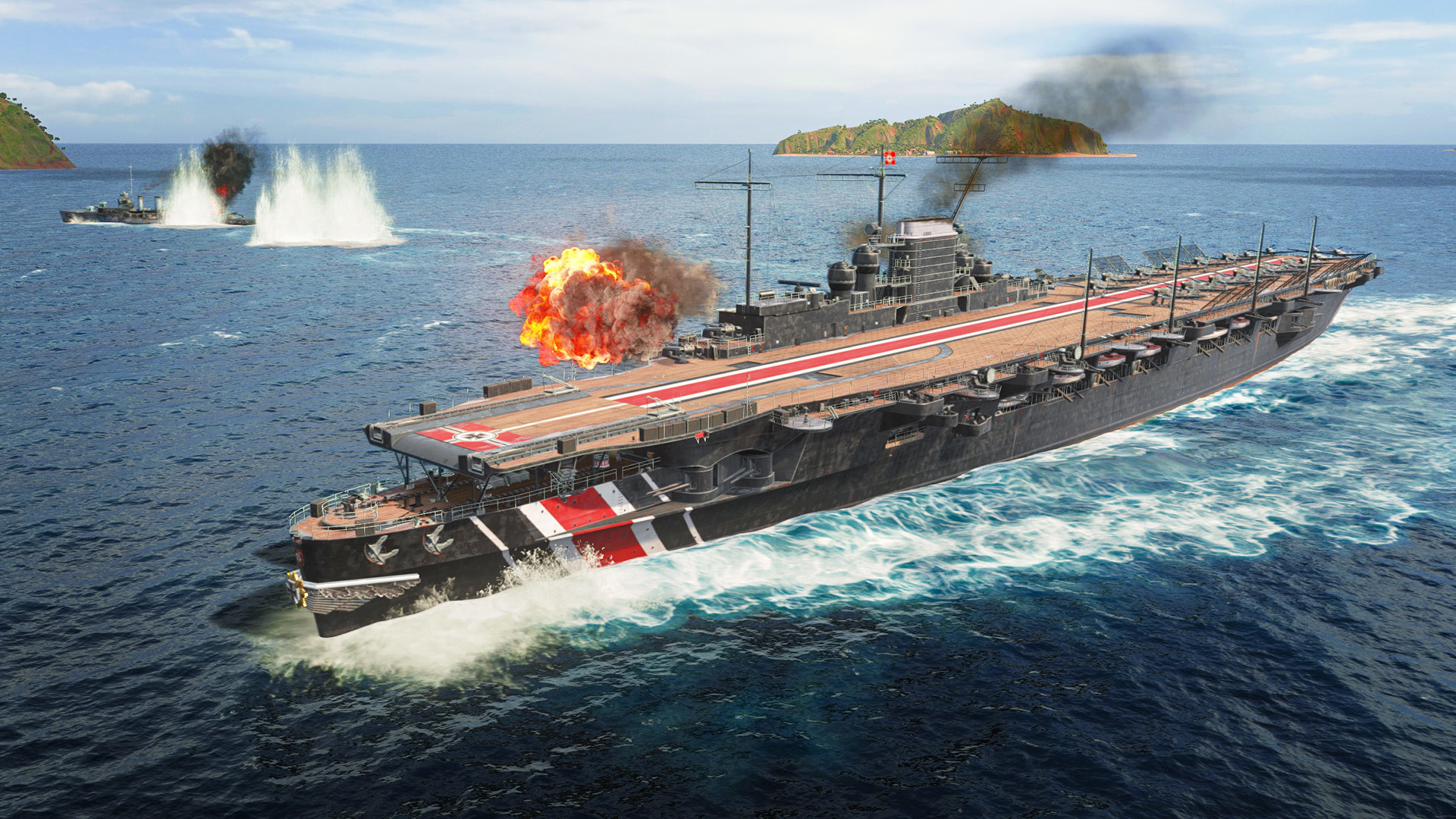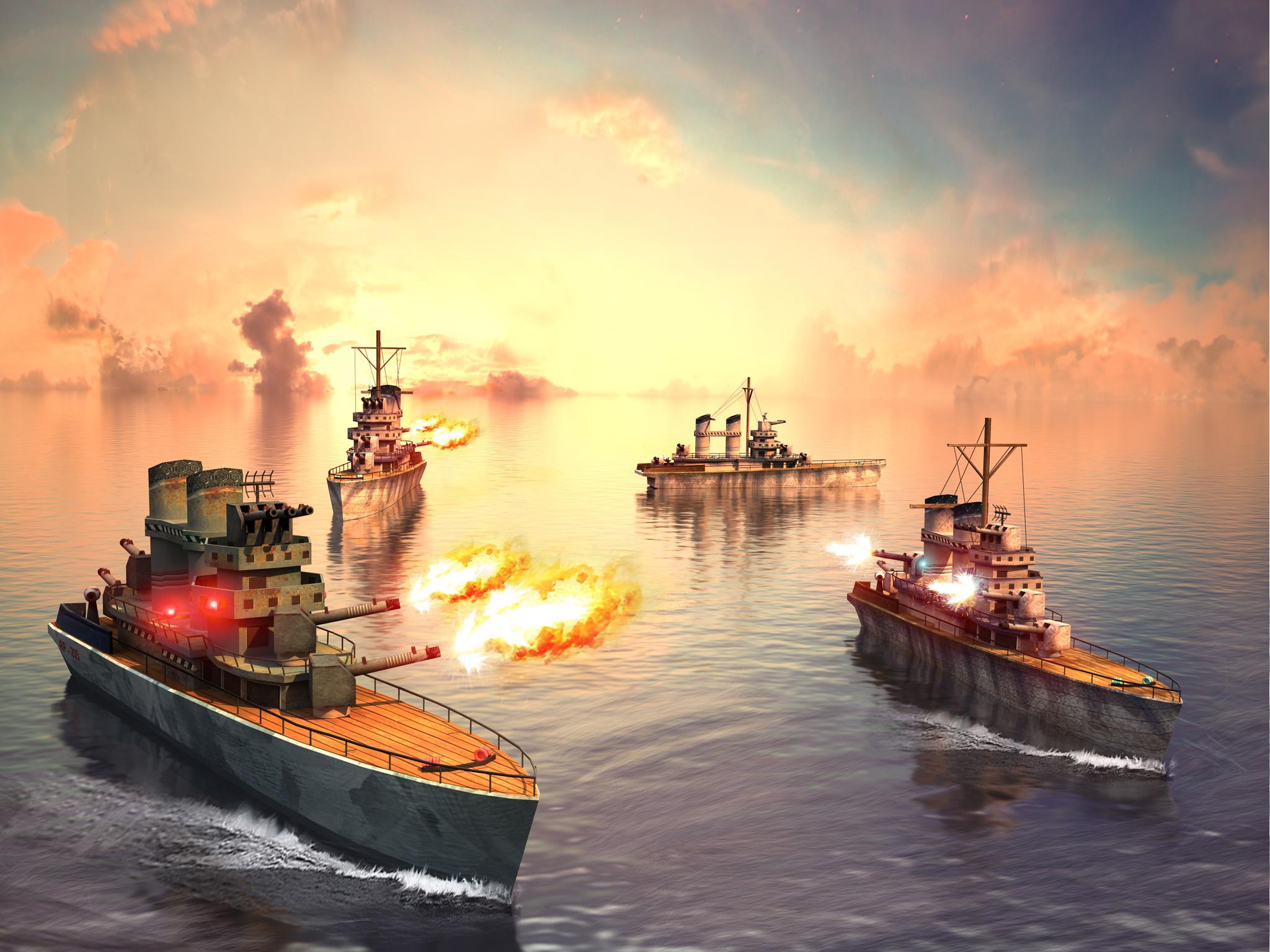Wwii Naval Battles - The American aircraft carrier USS Lexington exploded on May 8, 1942, a few hours after being damaged by a Japanese aircraft carrier.
The Battle of the Coral Sea, from May 4 to 8, 1942, was a major naval engagement between the Imperial Japanese Navy (IJN) and the navies and air forces of the United States and Australia. The battle, which took place in the Pacific Ocean of World War II, has historical significance as the first action where opposing ships did not see or shoot at each other, instead attacking aircraft carriers over the horizon.
Wwii Naval Battles

To strengthen their defensive position in the South Pacific, the Japanese decided to invade and occupy Port Moresby (in New Guinea) and Tulagi (in the southeast of the Solomon Islands). The plan of operation included several large units of the Japanese combined fleet. Two aircraft carriers and one light aircraft carrier were assigned to provide air cover for the occupation forces under the overall command of Admiral Shigeyoshi Inoue. The United States learned of the Japanese plan through intelligence and sent two US carrier task forces and a combined Australian-American cruiser force under the command of US Admiral Frank J. Fletcher to counter the attack.
Russia's Sunken Warship Moskva Recalls Great World War Ii Naval Battles
On the 3rd and 4th of May, Japanese forces successfully entered and occupied Tulagi, although many of the supporting warships were sunk or damaged in a surprise attack by the American fleet at Yorktown. Alerted to the presence of Amy's aircraft carriers, the Japanese fleet advanced into the Coral Sea to locate and destroy Allied naval forces. On the evening of 6 May, the two carriers closed to within 70 nmi (81 mi; 130 km), but failed to locate each other in the darkness. The next day, both fleets launched air strikes against what they believed to be Amy's fleet, but both sides were actually attacking other targets. The US sank a Japanese light aircraft carrier, and the Japanese sank an American destroyer and damaged an oil tanker. On May 8, the two sides finally engaged each other's ships and damaged the Japanese battleship Shokaku, the American battleship Lexington was badly damaged and later sunk, and the battleship Yorktown was lightly damaged. .
After both sides suffered heavy aircraft losses and aircraft carriers were sunk or damaged, both forces retreated and retreated from the area. Due to the loss of carrier air cover, Envoy also recalled the Port Moresby invasion fleet. While the battle was a tactical victory for the Japanese in terms of ships sunk, it was described as a strategic victory for the Allies. The battle was the first time since the start of the war that a major Japanese advance was reversed. More importantly, the damage to Shukaku and the loss of aircraft from Zoikaku prevented both ships from participating in the Battle of Midway the following month.
On December 8, 1941 (December 7, US time), Japan declared war on the United States and the British Empire, after Japanese forces invaded Malaya, Singapore, and Hong Kong, as well as the U.S. naval base at Pearl Harbor. attacked At the beginning of the war, the Japanese leadership sought to neutralize the American fleet, seize territories rich in natural resources, and acquire strategic military bases to defend their far-flung empire. In the words of Imperial Japanese Navy (IJN) Joint Fleet "Secret Order No. 1," dated November 1, 1941, the objectives of the first Japanese campaigns in the coming war were "the expulsion of British and American troops from the Dutch East Indies. [Reject] ". and the Philippines, [and] establishing a policy of sovereign self-sufficiency and economic independence."
In support of these objectives, in the first few months of 1942, in addition to Malaya, Japanese forces attacked and successfully captured the Philippines, Singapore, the Dutch East Indies, Wake Island, New Britain, the Gilbert Islands, and Guam. Heavy losses to Allied ground, naval and air forces. Japan intended to use these occupied territories to create a protective defense for its empire, from which it hoped to use broadside tactics to defeat or eliminate Allied counterattacks.
Wwii: Naval Battle, 1942. /nthe Sinking Of The Uss Wasp Aircraft Carrier By Japanese Torpedos, 15 September 1942 Stock Photo
Shortly after the start of the war, the Japanese navy proposed an attack on northern Australia to prevent Australia from being used as a base to threaten Japanese defenses in the South Pacific. The Imperial Japanese Army (IJA) rejected the proposal, saying it did not have the troops or ships to carry out such an operation. Meanwhile, Vice Admiral Shigeyoshi Inoue, commander of the IJN's 4th Fleet (also known as the South Sea Force), which had several naval units in the South Pacific, supported the occupation of Tulagi in the southeastern Solomon Islands and the port. Moresby in New Guinea, which would put northern Australia within range of Japanese land-based aircraft. Inoue believed that capturing and controlling these locations would provide greater security and defensive depth to the large Japanese base at Rabaul in New Britain. The Chief of Naval Staff and the IJA accepted Inoue's proposal and extended further operations, using these locations as support bases, to capture New Caledonia, Fiji, and Samoa, thus bridging the gap between Australia and the United States. Improving supply and communication lines.
In April 1942, the Army and Navy formed a plan called Operation The plan called for entering Port Moresby from the sea and securing it by 10 May. The plan also includes the capture of Tulgi on May 2-3, where the Navy will establish a base for naval aircraft and reconnaissance aircraft for possible air operations against allied areas and forces in the South Pacific. provide a base for After the completion of Mo, the Navy planned to launch Operation RY on 15 May using ships released from Mo to capture Nauru and Ocean Island for phosphate supplies. Further operations against Fiji, Samoa and New Caledonia (Operation FS) will be planned after completion of Mo and RY. Due to a damaging air attack by Allied land and aircraft carriers against Japanese naval forces entering the Lai Salamawa area of New Guinea in March, Ano requested a combined fleet of Japanese SD carriers to provide air cover for Mo . Inoue was particularly concerned about Allied bombers stationed at air bases in Townsville and Cooktown, Australia, in addition to his own bombers, based at Rabaul and La.
Admiral Isurouko Yamamoto, commander of the Combined Fleet, planned an operation for June at the same time that he hoped that the US Navy's aircraft carriers, none of which had been damaged in the attack on Pearl Harbor, would Proximity to the Pacific encourages decisive engagement in the central Pacific. hero Meanwhile, Yamamoto detached some of his larger warships, including two battleships, a light carrier, a cruiser division, and two destroyer divisions, to support Mo, and put Inoue in charge of the naval portion of the operation.

Unknown to the Japanese, the US Navy, led by the Communications Security Section of the Office of Naval Communications, had been having increasing success cracking Japanese communications ciphers and codes for years. By March 1942, the United States was able to interpret up to 15% of the IJN's Ro or Naval Codebook D code (called "JN-25B" by the United States), which accounted for about half of its communications by the IJN. was used By the end of April, the US was reading up to 85% of signals broadcast in Ro code.
Battle Of Midway
In March 1942, the US first mentioned MO operations in intercept messages. On 5 April, the US intercepted an IJN message directing aircraft carriers and other large warships to the area of operations. On 13 April, the British read an IJN message informing Inoue that the Fifth Carrier Division, consisting of the cruisers Shukaku and Zoikaku, was en route to his command from Formosa via the main IJN base at Truk. . The British relayed this message to the US, with their conclusion that Port Moresby was a likely MO target.
Admiral Chester W. Nimitz, the new commander of US forces in the Central Pacific, and his staff discussed the mistaken messages and agreed that the Japanese were likely to attack Port Moresby in the southwest Pacific in early May. Launch a major operation as a potential target. The Allies considered Port Moresby an important base for a planned counteroffensive under Gerald Douglas MacArthur against Japanese forces in the southwest Pacific. Nimitz's staff also concluded that Japanese operations could include air strikes against Allied bases in Samoa and Suva. Nimitz, after consulting with Admiral Ernest King as Commander in Chief of the US Fleet, decided to challenge the Japanese operation by sending the four remaining ships of the Pacific Fleet to the Coral Sea. On 27 April, further signals intelligence confirmed many details and objectives of the MO and RY plans.
On 29 April, Nimitz issued orders to send four of his carriers and their supporting battleships to the Coral Sea. Task Force 17 (TF 17), commanded by Vice Admiral Fletcher and consisting of the aircraft carrier Yorktown, was escorted by three cruisers and four destroyers and supported by a replacement group of two tankers and two destroyers.
Sig p365 tulster holster, sig p365 iwb holster, sig holsters p365, sig p365 sas holster, sig p365 xl holster, sig p365 hybrid holster, appendix holster sig p365, safariland holster sig p365, sig p365 belt holster, sig p365 holster, sig p365 purse holster, sig sauer p365 holster
0 Comments